
|
Established |
|
|
Type |
Public, Specialized |
|
Location |
29 Fort Greene Pl,
Brooklyn,
NY
11217,
|
|
District |
13 |
|
Oversight |
New York City Department of Education |
|
Colors |
Blue and White |
|
Mascot |
Engineers |
|
Yearbook |
The Blueprint |
|
Newspaper |
The Survey |
|
Website |
Jump to top of page OR Jump to bottom of page
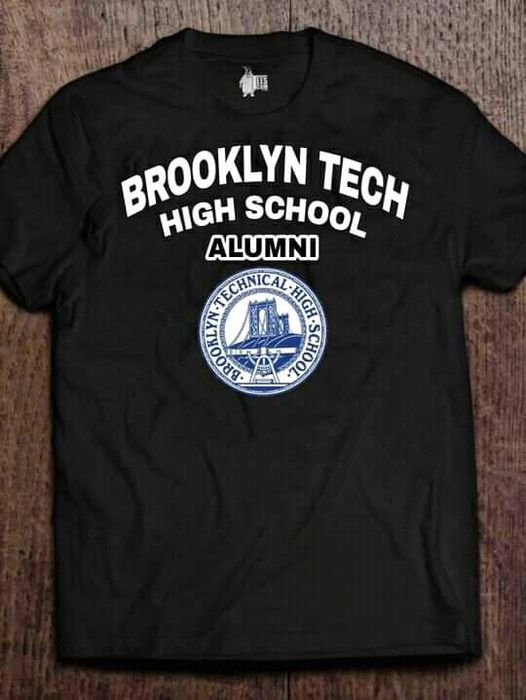
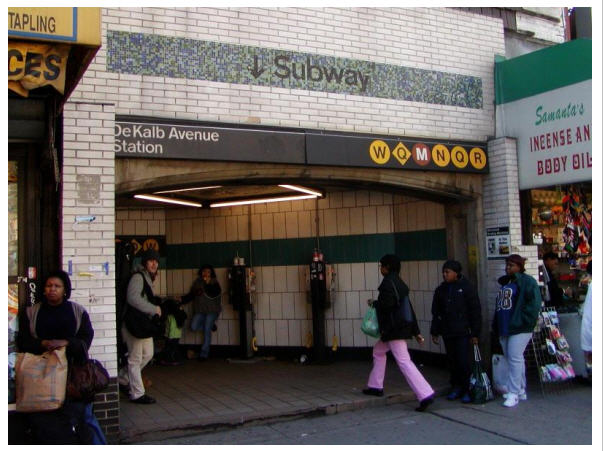
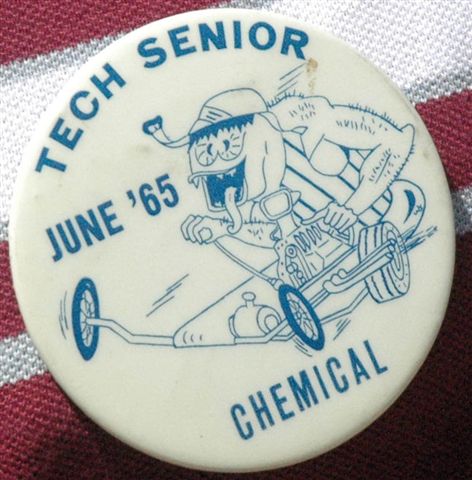
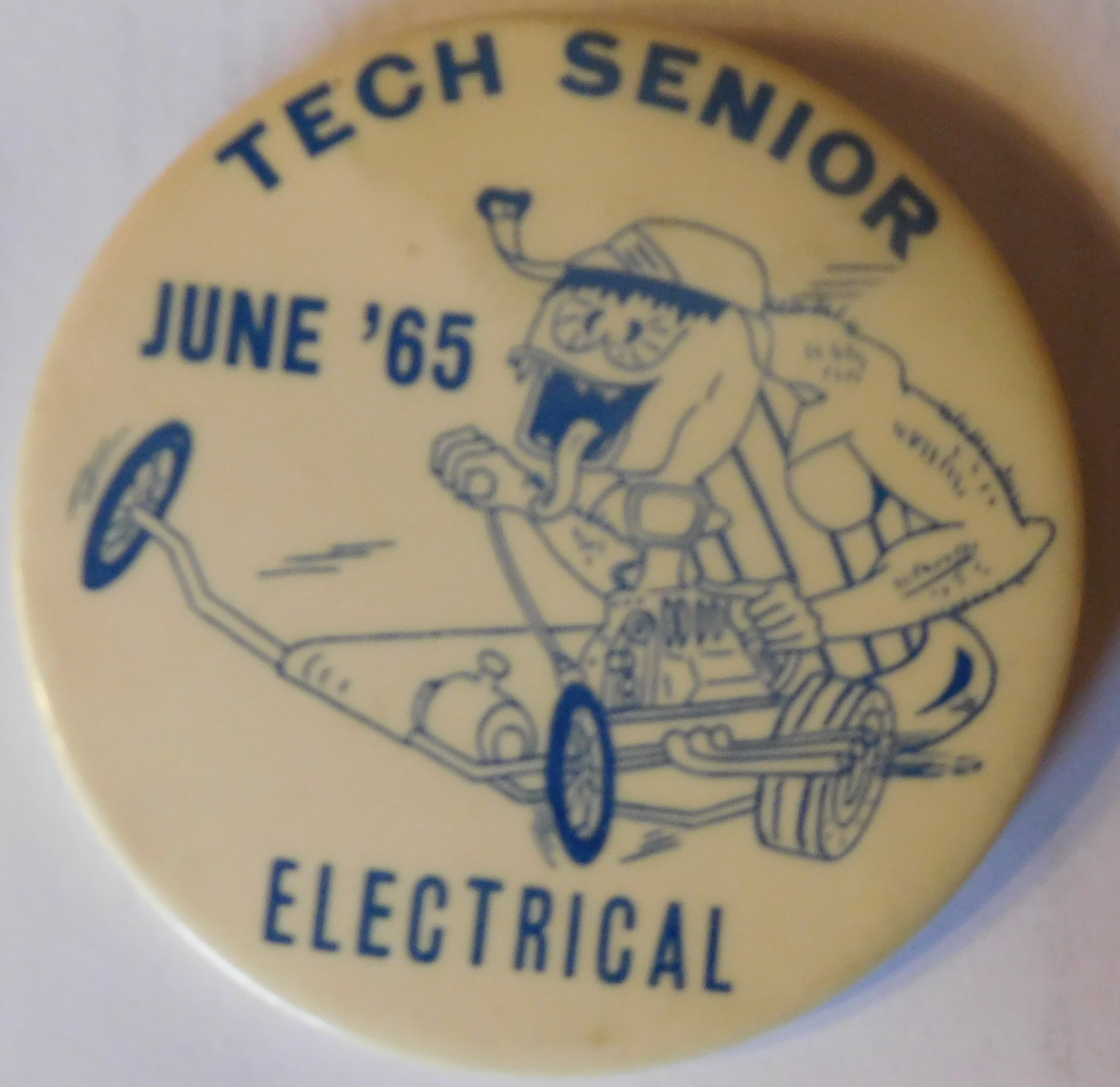
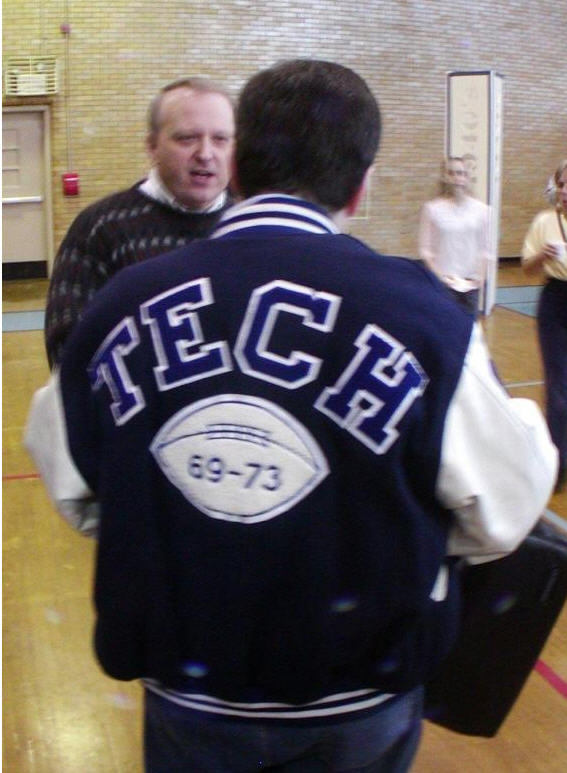
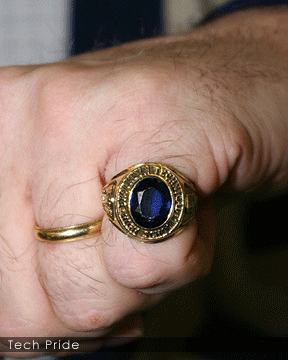
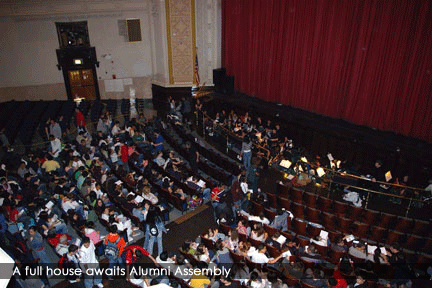
|
Brooklyn Technical High School, commonly referred to as Brooklyn
Tech, and administratively designated as High School 430, is a
New
York City public high school that specializes in engineering,
math and science and is the largest high school for science, technology,
engineering, and mathematics in the United
States. It is one of the most elite,
prestigious and selective high schools in the United
States. 2014 US News ranks BTHS as top 10 in
all of New York State as well as #60 in the entire nation.
Together with Stuyvesant High School and Bronx High School of Science, it is one of three original specialized high schools, operated by the New York City Department of Education, all three of which were cited by The Washington Post in 2006 as among the best magnet schools in the United States (a category the school is often placed in, though its founding pre-dates the concept of "magnet school" and whose intended purpose was not the same). Admission is by competitive examination though, as a public school, there is no tuition fee and only residents of the City of New York are eligible to attend. Brooklyn Tech is a founding member of the National Consortium for Specialized Secondary Schools of Mathematics, Science and Technology. Brooklyn Tech is noted for its famous alumni (including two Nobel Laureates), its academics, and the large number of graduates attending prestigious universities. Routinely, more than 98% of its graduates are accepted to four-year colleges with the 2007 graduating class being offered more than $1,250,000 in scholarships and grants. It appears as #63 in the 2009 ranking of the annual U.S. News & World Report "Best High Schools" list. In 2011, Brooklyn Tech was ranked by U.S. News & World Report among the top 50 of the nation’s Best High Schools for Mathematics and Science. Admission to Brooklyn Tech is based exclusively on an entrance examination, known as the Specialized High Schools Admissions Test (SHSAT), open to all eighth and ninth grade New York City students. The test covers math (word problems and computation) and verbal (reading comprehension, logical reasoning, and unscrambling paragraphs) skills. Out of the approximately 30,000 students taking the entrance examination for the September 2011 admission round, (with 23,085 students listing Brooklyn Tech as a choice on their application), about 1,951 offers were made (the most out of any of the specialized high schools, partly due to its size), making for an acceptance rate of 8.5%.
Brooklyn Tech is a founding member of the National Consortium for Specialized Secondary Schools of Mathematics, Science and Technology. Brooklyn Tech is noted for its famous alumni (including two Nobel Laureates), its academics, and the large number of graduates attending prestigious universities. Routinely, more than 98% of its graduates are accepted to four-year colleges with the 2007 graduating class being offered more than $1,250,000 in scholarships and grants. With approximately 4,200 students, and a 2006-2007 freshman class of approximately 1,200, Brooklyn Tech also has the largest enrollment of the city's specialized high schools, and is the nation's sixth-largest high school, according to U.S. News & World Report. |
Jump to top of page OR Jump to bottom of page
History of TechFor more than 80 years, Brooklyn Technical High School has been a proven leader in science, technology, engineering and mathematics-based education. Tech's administration and faculty, as well as the Alumni Foundation, are committed in this era of tight budgets to maintain and, indeed, enhance the quality of education being offered to today's and future generations of Technites. We will help continue our proud history. |
The Idea of Tech
Brooklyn Technical High School was
the dream of Dr. Albert L. Colston, mathematics department chairman at
Manual Training High School. In the aftermath of World War I, Dr.
Colston believed the country needed a better trained technical work
force. On October 18, 1918, he presented a paper to the Brooklyn Engineers' Club
recommending establishment of a technical high school curriculum for Brooklyn boys. |
Original PlanIn 1918, Dr. Albert L. Colston, chair of the Math Department at Manual Training High School, recommended establishing a technical high school for Brooklyn boys. His plan envisioned a heavy concentration of math, science, and drafting courses with parallel paths leading either to college or to a technical career in industry. By 1922, Dr. Colston's concept was approved by the Board of Education, and Brooklyn Technical High School opened in a converted warehouse at 49 Flatbush Avenue Extension, with 2,400 students. This location, in the shadow of the Manhattan Bridge, is the reason the school seal bears that bridge's image, rather than the more obvious symbol for the borough, the Brooklyn Bridge. Brooklyn Tech would occupy one more location before settling into its site at 29 Fort Greene Place, for which the groundbreaking was held in 1930.
Brooklyn Bridge Both Bridges Manhattan Bridge |
Jump to top of page OR Jump to bottom of page
Early Success
The success of the program was immediately evident. Opening with more than
2,400 students, classes soon had to be expanded to several annex
buildings located on Bridge Street, Kosciusko Street and Ryerson Street (PS
5, 69 and 74). With the demand for technical education growing and the
implementation of Dr. Colston's curriculum a proven success, plans were
made for a large, new building to house BTHS. After approval in 1927 by
the Board of Education, land was purchased and on September 17, 1930,
ground was broken by Mayor Jimmy Walker at 29 Fort Greene Place . The
$6 million building was ready for partial occupancy in the fall of
1933. Although the original building and some of the annexes remained
in use for a number of years, the electrical course and 800 freshman
boys were the first occupants of the present building, the jewel of the
New York City high school system. The hallmark of the education program developed by Dr. Colston was a curriculum that consisted of two years of general studies with a technical and mechanical emphasis followed by two years of specialization in one of several career-oriented majors. Majors in 1933 were Technical College Prep, Architecture and Building Construction, Chemical, Electrical, Mechanical, and Structural engineering. |
Early YearsAtypical for American high schools, Brooklyn Tech uses a system of college-style majors. The curriculum consists of two years of general studies with a technical and engineering emphasis, followed by two years of a student-chosen major. The curriculum remained largely unchanged until the end of Dr. Colston's 20-year term as principal in 1942. Upon his retirement, Tech was led briefly by acting Principal Ralph Breiling, who was succeeded by Principal Harold Taylor in 1944. Tech's modernization would come under Principal William Pabst, who assumed stewardship in 1946 after serving as chair of the Electrical Department. Pabst created new majors and refined older ones, allowing students to select science and engineering preparatory majors including Aeronautical, Architecture, Chemical, Civil, Electrical (later including Electronics and Broadcast), Industrial Design, Mechanical, Structural, and Arts and Sciences. A general College Preparatory curriculum would be added later. Principal Pabst retired in 1964. A railroad club was established by the late Vincent Gorman, a social studies teacher, and students attended fan trips, tours of rail repair facilities and participated in the restoration of steam engine #103 and a historic rail passenger car at the former Empire State Railroad Museum. In August 1965, a ten-year-old boy named Carl Johnson drowned in the swimming pool at Brooklyn Tech while swimming with his day-camp group. The next year, more than 30 graduating Seniors in the school (including many student leaders) complained that Tech's curriculum was old and outdated. Their primary complaint was that the curriculum was geared toward the small minority of students who were not planning on attending college. In 1967 the schools of New York City got to view television in the classrooms for the first time, thanks to the station WNYE-TV, then located in the transmitter center on top of Brooklyn Tech. For the school year beginning in the last half of 1970, females began attending; all three NYC specialized and test-required science high schools were now coeducational. |
Incorporation into Specialized High School System and Later YearsIn 1972, Brooklyn Tech, Bronx Science, Stuyvesant High School, and High School for Performing Arts become incorporated by the New York State Legislature as specialized high schools of New York City. The act called for a uniform exam to be administered for admission to Brooklyn Tech, Bronx Science, and Stuyvesant. The exam would become known as the Specialized High Schools Admissions Test (SHSAT) and tested students in math and English. With its statewide recognition, the school had to become co-educational. In 1973, Tech celebrated its 50th anniversary with a dinner-dance at the Waldorf Astoria. To further commemorate the anniversary, a monument was erected, with a time capsule beneath it, in the north courtyard. The monument has eight panels, each with a unique design representing each of Tech's eight majors at that point. Technological advances again changed Tech's character in 1976, with the school adding the Graphic Communications major, now commonly known as the "Media" major. In 1983, Matt Mandery's appointment as principal made him the first Tech alumnus to hold that position. The following year, Tech received the Excellence in Education award from the U.S. Department of Education. The Alumni Association was formally created during this time, and coalitions were formed with the New York City Department of Transportation. Mandery oversaw the addition of a Bio-Medical major to the curriculum. John Tobin followed as principal in 1987 and abolished the Materials Science department and closing the seventh-floor foundry. In the mid-1980s, a violent street gang known as the Decepticons was founded at Brooklyn Tech. As well, in 2000, the city issued a special report concerning the lack of notification to law enforcement during a string of robberies within the high school, including armed robbery with knives and stun guns. John Tobin followed as principal in 1987. He oversaw the addition of a Bio-Medical major to the curriculum, while abolishing the Materials Science department and closing the 7th floor foundry. The Brooklyn Tech Cheerleading Squad appeared in the 1988 Spike Lee film School Daze, and a video for the movie, entitled "Da Butt", was shot at Brooklyn Tech. Lee also used the first floor gymnasium as a shooting location for Jesus Shuttlesworth's, played by Ray Allen, Sportscenter preview in He Got Game. |
Recent YearsIn March 1998, an alumni group led by Leonard Riggio, class of 1958, announced plans for a fund-raising campaign to raise $10 million to support their alma mater financially through facilities upgrades, establishment of curriculum enhancements, faculty training, and a university-type endowment. The endowment fundraiser, the first of its kind for an American public school, received front-page attention in The New York Times and sparked a friendly competition amongst the specialized high schools, with both Bronx Science and Stuyvesant announcing their own $10 million campaigns within weeks of the Brooklyn Tech announcement. In November 2005, the Brooklyn Tech Alumni Association announced the completion of the fundraising phase of what they had termed the Campaign for Brooklyn Tech. In April 2008, the Brooklyn Tech Alumni Foundation launched a second endowment campaign. Since 2001, Brooklyn Tech has undergone such refurbishing as the renovation of the school's William L. Mack Library entrance, located on the fifth-floor center section. As well, two computer labs were added. The school also reinstated a class devoted to the study of Shakespeare, which students can elect to take in their senior year. |
Jump to top of page OR Jump to bottom of page
Lee McCaskill ControversyDr. Lee D. McCaskill, appointed principal in 1992, served for 14 years, during which Tech saw the installation of more computer classrooms and the switch from traditional mechanical drawing by hand to teaching the use of computer-aided design programs. McCaskill also presided over the elimination of long-standing hallmark academic concentrations at Tech such as aerospace engineering. In 2000, the Special Commissioner of Investigation for the NYC School District wrote a report condemning Brooklyn Technical High School administrators for failing to report several armed robberies that took place in the bathrooms and stairwells. In 2003, The New York Times published an investigative article that noted "longstanding tensions" between the faculty and Principal McCaskill, "spilled into the open in October, with news reports that several teachers accused him of repeatedly sending sexually explicit e-mail messages from his school computer to staff members". The article described the principal as autocratic, controlling the school "largely through fear and intimidation", and documented acts of personal vindictiveness toward teachers; severe censorship of the student newspaper and of assigned English texts, including the refusal to let the Pulitzer Prize-finalist novel Continental Drift by Russell Banks be used for a class; and of bureaucratic mismanagement. The article also quoted praise from McCaskill's supervising superintendent, Reyes Irizarry, who cited the principal's expansion of music and sports programs. A follow-up column in 2004 found the situation had worsened due to increased teacher exodus, and documented Principal McCaskill's campaign against Alice Alcala, described as one of the city's leading Shakespeare teachers. Alcala had won Brooklyn Tech a $10,000 grant and brought in the Royal National Theatre of Great Britain for student workshops. "When [McCaskill] tried killing her Shakespeare program", the Times wrote, "she went over his head to the central administration and got it reinstated. The day after she was quoted in news articles criticizing McCaskill, she received an unsatisfactory classroom observation rating for the first time in 28 years of teaching. She was repeatedly denied access to the auditorium and in June, got an unsatisfactory for the year." Alcala left for Manhattan's Murry Bergtraum High School, where she shortly thereafter brought in $1,800 in grants for Shakespeare education, while at Brooklyn Tech, the article reported, there was no longer any course solely devoted to Shakespeare. 2005 articles in the New York Daily News and New York Teacher note that a $10,000 grant obtained by Dr. Sylvia Weinberger in 2001 to refurbish the obsolete radio room remained unused. New classroom computers were covered in plastic rather than installed because the classrooms had yet to be wired for them. The Office of Special Investigations of the New York City Department of Education launched an investigation of McCaskill on February 2, 2006, concerning unpaid enrollment of New Jersey resident McCaskill's daughter in New York City public school, which is illegal for non-residents of the city. On February 6, McCaskill announced his resignation from Brooklyn Tech and agreed to pay $19,441 in restitution. After retiring from Brooklyn Tech, McCaskill became principal of Hillside High School in New Jersey, where In 2013, he resigned following accusations he spanked a female student. On February 7, 2006, the Department of Education named Randy Asher, founding principal of the High School for Math, Science and Engineering (HSMSE), as interim acting principal. Mr. Asher had previously served as Tech's assistant principal in mathematics from 2000-2002 before leaving to become founding principal of HSMSE. Special commissioner Richard J. Condon rebuked the Department of Education a week later for allowing McCaskill to retire, still collecting $125,282 in accrued vacation time, just days before the OSI completed its investigation. Condon also recommended that Cathy Furman McCaskill, the principal's wife, be dismissed from her position as a teacher at Boys and Girls High School in Brooklyn for her part in submitting fake leases and other fraudulent documents to indicate the family lived in the Cobble Hill section of Brooklyn. The next day, the Department of Education announced it would move to fire her. |
Jump to top of page OR Jump to bottom of page
Beyond the CurriculumExtra-curricular activities were deemed important from Tech's earliest days, beginning with the publication of the school newspaper, The Survey, in 1922 and closely followed by the creation of The Science Bulletin, the first of many departmental publications. The Survey's Senior Number, the original combined yearbook and literary magazine, was replaced in 1933 by The Blueprint which has continued to this day as the Senior yearbook.
Other outlets for student activity soon developed. The S.O.S. (Service Squad), comprised of Tech students, patrolled the property and became a hallmark of order in the school for almost 60 years. The Student Government Organization, Longfellows, Arista and many other organizations prospered. Sports became an integral part of the Tech experience with baseball, football, tennis, cross-country track, ice hockey, swimming, basketball, bowling, riflery, fencing and soccer among the favorites. In 1939, WCNY changed its call letters to WNYE and, form the eighth floor studio atop Tech, the radio station pioneered educational broadcasting in New York City for the Board of Education. In 1941, an FM transmitter was added to the installation. Of particular pride to Dr. Colston was the development and support of Works Project Administration (WPA) project #3149, the Tech foyer mural developed by artist Maxwell Starr. The mural's theme, The History of Mankind, traces developments from the Stone Age through the 1930s and portrays notable scientists and inventors. It remains the centerpiece of Tech's main lobby, in part thanks to its restoration in 1998 by the Alumni Association. |
The War YearsThe years during World Way II brought increased activity to Tech as many students rushed to graduate early and join the armed forces. Their letters home to Group Advisor Howard Garrett, many of which are in the Alumni Foundation archives, attest to the quality of their Tech education and its applicability to needed wartime skills. During those years and for many years thereafter, Tech was also used extensively as an adult education night school to train people in technical skills. The Brooklyn Tech Evening High School provided many working men with a quality education.
Upon the retirement of Dr. Colston in 1942, Ralph Breiling was appointed acting principal by the Board of Education, to be succeeded by Acting Principal Harold Taylor in 1944. In January of 1946, Electrical Department Chairman William Pabst was selected as principal. The Pabst years, 1946 through 1964, were the most stable in the development of Tech as a school of excellence. Course selections were aeronautics, architecture, chemistry, electrical and electronics, industrial design, mechanical technology, structural technology, and technical college preparatory. Horizons, the school literary magazine, was added to the existing publications and has been produced every term since. Upon Dr. Pabst's retirement, Frank Stewart was appointed acting principal, serving until the permanent selection of Isidor Auerbach who was installed by then Mayor John Lindsay in the late 1966. |
The Turbulent YearsThe mid-1960s were a turbulent time for the country, the city and
Technites. A transit strike, two teacher strikes, the civil rights
movement, the Vietnam conflict and Woodstock brought protests and
anxiety affecting Tech students as they did all other New Yorkers. In nineteen seventy Tech underwent a major change when female students were admitted to Tech for the first time. Two years later, Tech welcomed a new principal when Dr. Louis Weiss, former Chemistry Department Chairman and Acting Principal, was appointed. In the fall of that year, the Tech Players presented Guys and Dolls to rave reviews and established the tradition of an annual production. In recent years Technites have brought The Music Man, Bye Bye Birdie and The Wizard of Oz to the great Tech auditorium. |
Jump to top of page OR Jump to bottom of page
Fiftieth (50th) Anniversary
Nineteen seventy-three marked the 50th
anniversary of Brooklyn Tech. To commemorate the occasion, a monument
was erected in the North courtyard complete with a time capsule buried
beneath it. The occasion was also marked by a gala 50th Anniversary Dinner-Dance at the
Waldorf Astoria. The mid-1970s saw the addition of a graphics communication course and the introduction of student ID cards. In 1976, Acting Principal and Material Science Department Chairman Herbert Tucker was succeeded by Richard Brucato as principal. The following year saw the demise of the student handbook, first published in 1923. Because of Board of Education policy prohibiting schools from requiring students to purchase books, publication of the handbook was discontinued in 1978. In 1998, the alumni funded CARETECH program reintroduced the handbook planner as part of its freshman orientation.
By the early 1980s, the S.O.S. had been disbanded because it put students in potentially high-risk situations. In 1982, Al Zachter was assigned as acting principal to be succeeded in 1983 by Tech graduate Dr. Mathew M. Mandery, Class of 1961; the first and only alumnus to lead Tech. Under Dr. Mandery's leadership, the current Alumni Foundation was born and began its annual Homecoming and on-going support of Tech projects and activities. That same year, Tech received the Excellence in Education award for secondary schools from the U.S. Department of Education. The third principal of the decade was appointed in 1987 when John Tobin assumed the position. The late 1980s also saw the introduction of the Bio-Med course as a major, changes in course offerings, including closing the Materials Science Department, and the eventual closing of the Foundry. |
Tech TodayLeaving in January 1992, Mr. Tobin was succeeded by Assistant Principal Dr. Lee D. McCaskill, who served as principal until February 2006. In March 2006, Randy J. Asher was appointed as principal. Tech Student Snapshot:
Tech Curriculum Snapshot:
Tech Highlights:
|
Jump to top of page OR Jump to bottom of page
Building and FacilitiesThe school, built on its present site from 1930-33 at a cost of $6 million, is 12 stories high, and covers almost an entire city block. Facilities include:
A 456-foot-tall rooftop broadcasting antenna, when added to the height of the building itself (145 feet), makes Brooklyn Tech the borough's tallest structure, at 597 feet high It is 85 feet taller than Brooklyn's tallest building, the 512-foot Williamsburg Savings Bank.
In 1934, the Public Works of Art Project (PWAP), which later became the Works Projects Administration (WPA), commissioned artist Maxwell B. Starr to paint a mural in the foyer depicting the evolution of man and science throughout history. Brooklyn Tech's founder and first principal, Dr. Albert L. Colston, had an apartment built for himself in the tower of the building, and was the only person to live at Brooklyn Tech In December 2006, developer and New Jersey Nets owner Bruce Ratner proposed a new building for Tech as part of the basketball arena he is constructing at the Atlantic Yards. The building will reportedly be able to fit about 6000 students. |
Jump to top of page OR Jump to bottom of page
HISTORYEarly AcademicsA notable feature of Brooklyn Tech is its system of college-style majors . The curriculum consists of two years of general studies with a technical and engineering emphasis, followed by two years of a student-chosen major. The curriculum remained largely unchanged until the end of Dr. Colston's 20-year term as principal in 1942. Upon his retirement, Tech was led briefly by acting principal Ralph Breiling, who was succeeded by Principal Harold Taylor in 1944. Tech's modernization would come under Principal William Pabst, who assumed stewardship in 1946 after serving as chair of the Electrical Department. Pabst created new majors and refined older ones, allowing students to select science and engineering preparatory majors including Aeronautical; Architecture; Chemistry; Civil; Electrical (later including electronics); Industrial Design, Mechanical and Structural. Arts and Sciences, a general college preparatory curriculum, would be added later. Principal Pabst retired in 1964. In August 1965, a ten-year-old boy named Carl Johnson drowned in the swimming pool at Brooklyn Tech while swimming with his day-camp group. The next year, more than 30 graduating Seniors in the school (including many student leaders) complained that Tech's curriculum was old and outdated. Their primary complaint was that the curriculum was geared towards the small minority of students that were not planning on attending college. In 1967 the schools of New York City got to view television in the classrooms for the first time, thanks to the station WNYE-TV, then located in the transmitter center on top of Brooklyn Tech. 1968 was a turbulent year at Tech, when Principal Isidor Auerbach rebuked approximately 200 students who had violated the school's dress code by wearing jeans to school. Dean Jack Feuerstein lectured the students on discipline then sent them to the auditorium, where they spent the day studying. In early February, approximately 300 students at Tech protested outside in support of the Vietnam War, with students holding signs that said "Support the Boys in Vietnam" and "Bomb Hanoi" In May 1969, 60 students were suspended in what was called the biggest mass suspension ever in New York City's public school system] The suspensions came about when three students were first suspended for hanging pictures of Martin Luther King Jr., and Eldridge Cleaver, spokesperson for the Black Panther Party, in the cafeteria. 60 other students refused to go to their classes to protest the suspension of these three and were subsequently suspended by Principal Auerbach. |
EndowmentIn March 1998, an alumni group led by Leonard Riggio, class of 1958 announced plans for a fundraising campaign to raise $10 million to support their alma mater financially through facilities upgrades, establishment of curriculum enhancements, faculty training, and a university-type endowment. The endowment fundraiser, the first of its kind for an American public school, received front-page attention at The New York Times and sparked a friendly competition amongst the specialized high schools, with both Bronx Science and Stuyvesant announcing their own $10 million campaigns within weeks of the Brooklyn Tech announcement. In November 2005, the Brooklyn Tech Alumni Association announced the completion of the fundraising phase of what they had termed the Campaign for Brooklyn Tech. |
Tech in the 21st CenturySince 2001, Brooklyn Tech has undergone such refurbishing as the renovation of the school's William L. Mack Library entrance, located on the fifth-floor center section. As well, two computer labs were added. The school also reinstated a class devoted to the study of Shakespeare, which students can elect to take in their senior year. Classes were held during the 2005 New York City transit strike, though attendance was sparse. Tech uses a college-style system of majors, unusual for an American high school. As of April 2007, majors include:
Students apply for majors in sophomore year, and take ten semesters of major classes throughout junior and senior year. Tech also has a Bio-Chemistry major as part of its "Gateway to Medicine" program, to which, unlike the other majors, students apply to as incoming freshmen. All Advanced Placement science courses are taught as double periods to accommodate the large lab requirement. |
Extracurricular ActivitiesBrooklyn Tech fields 30 junior-varsity and varsity teams in the Public School Athletic League (PSAL). The school's more than 100 clubs and organizations include math, debate, forensics (speech), robotics, chess and mock trial teams, which compete in inter-school tournaments. The Model U.N. Club provides students with a venue for discussing foreign affairs. Other clubs cater to a wide range of topics such as anime, Dance Dance Revolution, ultimate Frisbee, politics, quilting, and animal rights. Brooklyn Tech is also known for its strong varsity swim program and its tennis team.S.I.N.G. is an annual tradition that pits seniors against juniors against freshmen and sophomores in a competition to create the best student-produced play. Additionally, Tech students put on a musical each spring. The school Coordinator of Student Activities (COSA) works with students to help organize events and gain administration approval for student activities. Beginning with the class of 2010, each student must meet the following requirements by the end of their senior year to receive a Brooklyn Technical High School diploma: I. A minimum of 50 hours of community service outside of the school or through specified club activities. II. A minimum of 32 points earned through participation in Tech clubs, teams, and/or participation in designated school related events. A. Points are earned as follows: 1. 8 points per term to all students in BETA, NHS, Student Government, student productions, stageworks, cheerleading, and PSAL teams. 2. 6 points per term to all students participating student leadership, who work on office squads, or compete in non-PSAL teams. 3. 4 points per term to all students who participate in all other clubs not referred to above. 4. 2 points per term for participation in specified school events |
Jump to top of page OR Jump to bottom of page
Alma Mater
|
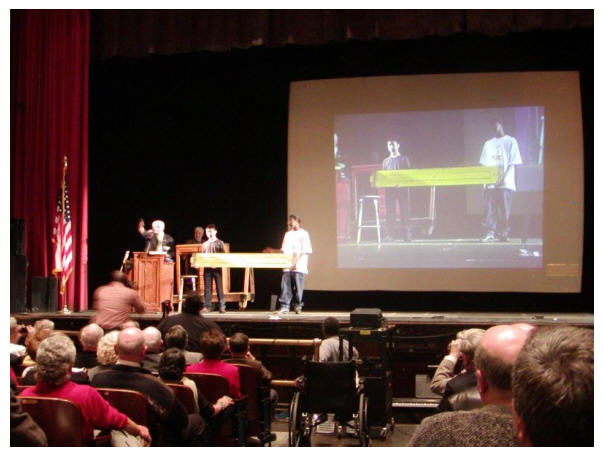
Slide ruler being auctioned off.
Jump to top of page OR Jump to bottom of page
Notable Alumni
The Brooklyn Tech Alumni Hall of Fame was established in 1998. Situated in the administrative wing of Tech, the Hall of Fame serves as reminder and inspiration to today's Tech students. The Hall of Fame recognizes distinguished alumni who have made Brooklyn Tech's name honored throughout the country and the world and who exemplify the best of Tech. Members of the Hall of Fame have achieved distinction in their respective fields in the hope that their examples will inspire new generations of students to appreciate an education stressing mathematics, science, engineering and technology. Nominations are submitted by alumni, faculty, students and parents.
Hall of Fame inductees listed separately at end, by year. Note: No inductions 2001-2002 and 2004.
1998 Hall of Fame inducteesInaugural year
1999 Hall of Fame inductees
2000 Hall of Fame inductees
2003 Hall of Fame inductees
2005 Hall of Fame inductees
|
Building and FacilitiesBrooklyn Tech as seen from Ashland Place in Fort Greene From the corner of DeKalb Avenue and Fort Greene Place The radio transmitting antenna atop the school The school, built on its present site from 1930-33 at a cost of $6 million, is 12 stories high, and covers over half a city block. Brooklyn Technical High School is directly across the street from Fort Greene Park. Facilities at BTHS include:
|
© Copyright 1966-2025, The House of Mosher '69. All rights reserved. - - - This page was last updated on January 1, 2025 @ 12:1 AM.